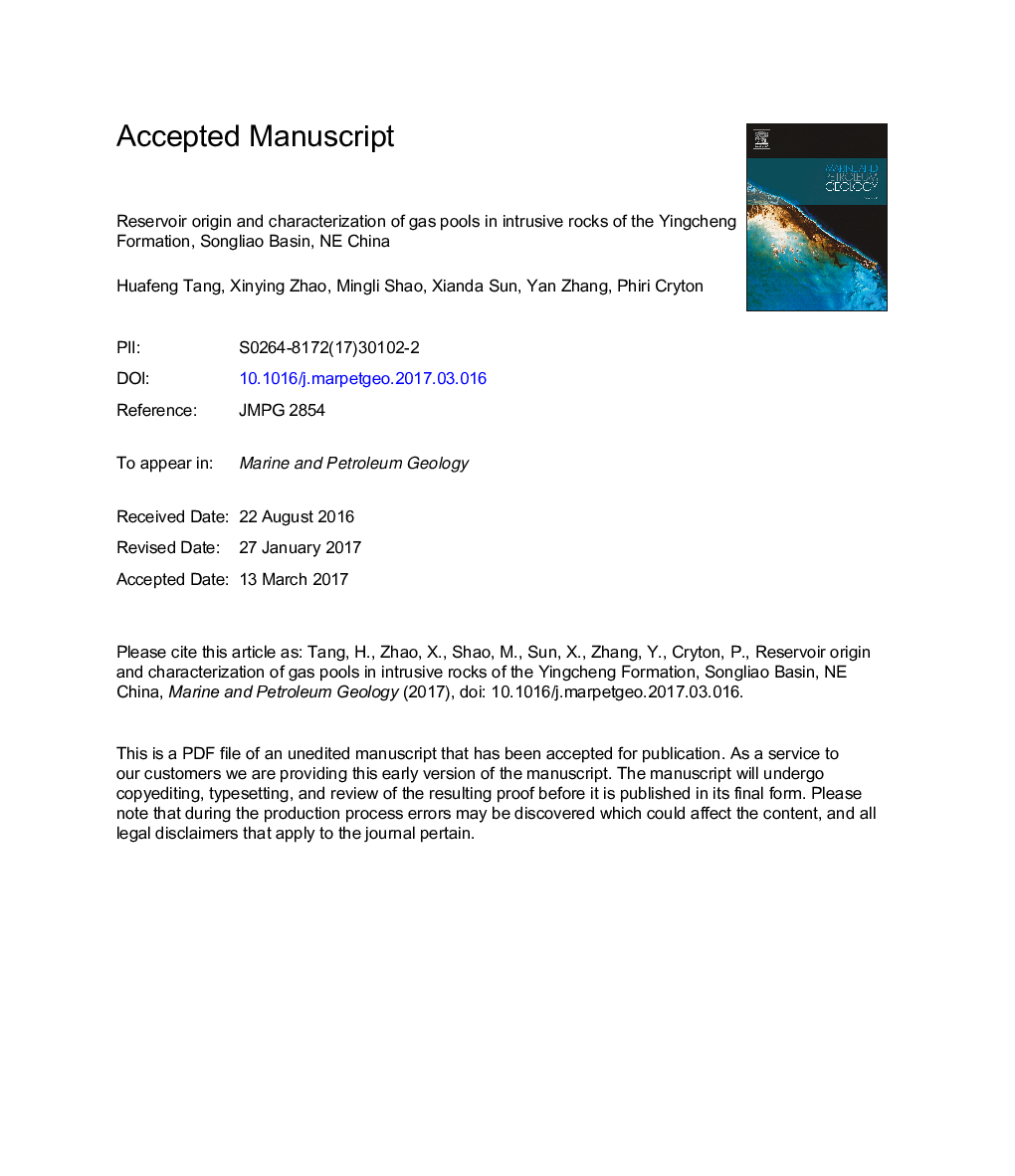| Article ID | Journal | Published Year | Pages | File Type |
|---|---|---|---|---|
| 5782053 | Marine and Petroleum Geology | 2017 | 26 Pages |
Abstract
In 2013, the first discovery of gas pools in well LS 208 in intrusive rocks of the Songliao Basin (SB), NE China was made in the 2nd member of the Yingcheng Formation in the Yingtai rift depression, proving that intrusive rocks of the SB have the potential for gas exploration. However, the mechanisms behind the origin of reservoirs in intrusive rocks need to be identified for effective gas exploration. The gas pool in intrusive rocks can be characterized as a low-abundance, high-temperature, normal-pressure, methane-rich, and lithologic pool based on integrated coring, logging, seismic, and oil test methods. The intrusive rocks show primary and secondary porosities, such as shrinkage fractures (SF), spongy pores (SP), secondary sieve pores (SSP), and tectonic fractures (TF). The reservoir is of the fracture-pore type with low porosity and permeability. A capillary pressure curve for mercury intrusion indicates small pore-throat size, negative skewness, medium-high displacement pressure, and middle-low mercury saturation. The development of fractures was found to be related to the quenching effects of emplacement and tectonic inversion during the middle-late Campanian. SP and SSP formed during two phases. The first phase occurred during emplacement of the intrusive rock in the late Albian, when the intrusions underwent alteration by organic acids. The second phase occurred between the early Cenomanian and middle Campanian, when the intrusions underwent alteration by carbonic acid. The SF formed prior to oil charging, the SSPÂ +Â SP formed during oil charging, and the TF formed during the middle-late Campanian and promoted the distribution of gas pools throughout the reservoir. The intrusive rocks in the SB and the adjacent basins were emplaced in the mudstone and coal units, and have great potential for gas exploration.
Related Topics
Physical Sciences and Engineering
Earth and Planetary Sciences
Economic Geology
Authors
Huafeng Tang, Xinying Zhao, Mingli Shao, Xianda Sun, Yan Zhang, Phiri Cryton,
